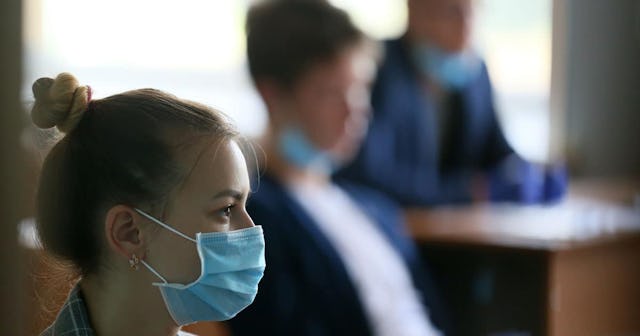New Study Says Older Kids Spread Coronavirus As Much As Adults

A new and large study on coronavirus spread says older kids are as contagious as adults
The school reopening conversation continues to divide America as the president insists on reopening while parents worry about their children’s health and safety if they were to send them back to school in the fall. Up until this point, the information on how COVID-19 affects children has been confusing, to put it mildly, but a new study out of South Korea states that older kids (age 10 to 19) spread coronavirus at the same rate as infected adults do, and this news does not bode well for school reopening debate.
As reported by the CDC, South Korean researchers studied 5,706 coronavirus patients and the 59,073 individuals they came in contact with to learn more about how the virus spreads. Dr. Ashish Jha, director of the Harvard Global Health Institute, told The New York Times that the research in this study was “very carefully done, it’s systematic and looks at a very large population. It’s one of the best studies we’ve had to date on this issue.”
The bottom line is that researchers discovered that children under 10 were half as likely as adults to spread the virus to others, but children over age 10 spread the virus at about the same rate as adults did, which is something to consider when middle school and high school kids go back to school and are interacting with their peers, but also their teachers, administrators, and janitors. The study had some theories about why older kids are more likely to spread the virus at a greater rate and it may have to do with height as younger kids are more likely to exhale closer to the ground, where there are fewer people to infect. The study also pointed out that older kids are less likely to be as hygienic as adults, so they could potentially be more contagious than adults, as they may not be taking proper precautions to prevent the spread of the disease.
“…Putting them together in schools, having them mix with teachers and other students will provide additional opportunities for the virus to move from person to person,” Jeffrey Shaman, an epidemiologist at Columbia University’s Mailman School of Public Health in New York warned (via New York Times).
Arne Dedert/picture alliance via Getty Images
The biggest question out of the study that remains is how contagious are asymptomatic children, as the study only looked at children who showed symptoms.
Unfortunately, all the news surrounding school reopenings is just as worrisome as this. Yesterday, the Trump administration banned the CDC from speaking at an upcoming hearing on how to safely open the schools. To date, very few districts have made formal plans for the fall, but in COVID-19 hotspot states like California, most schools in the state will not be reopening under new guidelines and places like Richmond, Virginia, and Prince George’s County, Maryland just announced they will all do online-only learning this fall.
It is an extremely stressful time for parents and kids as the start of the school year looms overhead. If only we could look to the federal government for some guidance during these unsettling times.
This article was originally published on